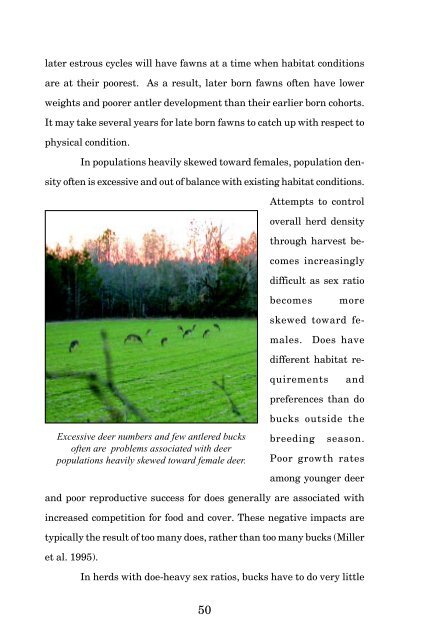Biology And Management Of White-tailed Deer In Alabama
Biology And Management Of White-tailed Deer In Alabama
Biology And Management Of White-tailed Deer In Alabama
You also want an ePaper? Increase the reach of your titles
YUMPU automatically turns print PDFs into web optimized ePapers that Google loves.
later estrous cycles will have fawns at a time when habitat conditions<br />
are at their poorest. As a result, later born fawns often have lower<br />
weights and poorer antler development than their earlier born cohorts.<br />
It may take several years for late born fawns to catch up with respect to<br />
physical condition.<br />
<strong>In</strong> populations heavily skewed toward females, population density<br />
often is excessive and out of balance with existing habitat conditions.<br />
Attempts to control<br />
overall herd density<br />
through harvest becomes<br />
increasingly<br />
difficult as sex ratio<br />
becomes<br />
more<br />
skewed toward females.<br />
Does have<br />
different habitat requirements<br />
and<br />
preferences than do<br />
Excessive deer numbers and few antlered bucks<br />
often are problems associated with deer<br />
populations heavily skewed toward female deer.<br />
bucks outside the<br />
breeding season.<br />
Poor growth rates<br />
among younger deer<br />
and poor reproductive success for does generally are associated with<br />
increased competition for food and cover. These negative impacts are<br />
typically the result of too many does, rather than too many bucks (Miller<br />
et al. 1995).<br />
<strong>In</strong> herds with doe-heavy sex ratios, bucks have to do very little<br />
50
















